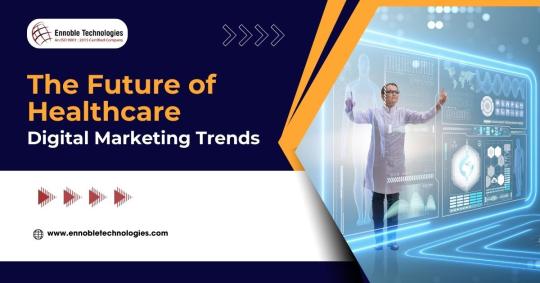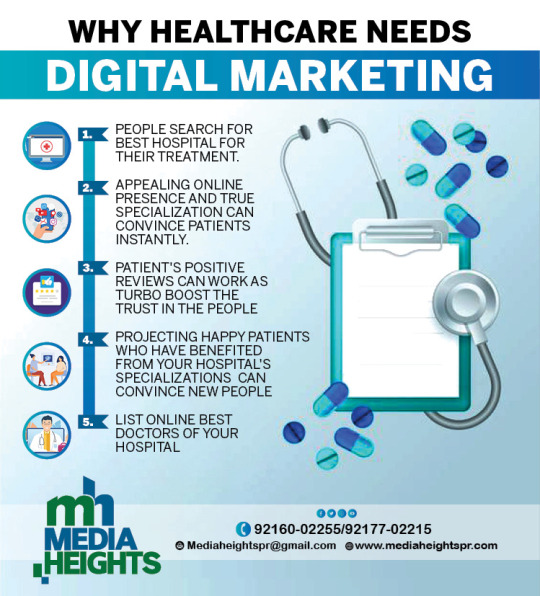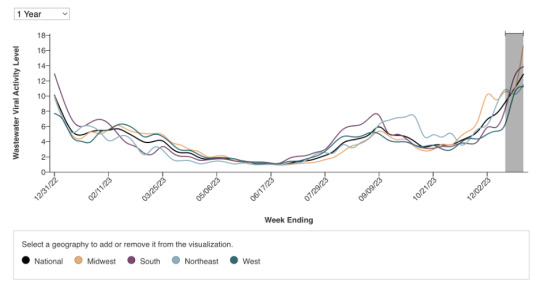#data driven healthcare
Text
A Data-Driven Approach to Healthcare - Brain Injury and Disease Research

Cloud adoption & data pipeline automation in healthcare
Traditionally, healthcare advancements have progressed slowly due to siloed research and delayed results. However, with cloud application modernization, all that is changing for good. A unique collaboration between life sciences organizations and digital solution providers is offering an unprecedented level of insight into managing conditions and achieving optimal patient outcomes. Cloud modernization is expanding healthcare organizations’ ability to use data pipeline automation to effectively diagnose patients.
A prime example of cloud adoption is a nonprofit research organization dedicated to biomedical research and technology. The organization has been instrumental in facilitating advances in brain injury and disease research through its launch of the first cloud-based and interactive platform that supports information and idea exchange to further progress in neuroscience research. It uses big data to promote computational innovation discovery in brain diseases.
Co-created by Hitachi and other partners, this platform is a trusted portal where clinical researchers, physicians, and organizations can collaborate on research and the validation of emerging therapeutics.

The context of merging human and artificial intelligence for analyzing health data
Medical research data is becoming siloed, diverse, and complex. To break this complexity, a robust IT infrastructure with the capacity to aggregate data across multiple studies is required along with harnessing patients’ data to improve the healthcare system.
The organization needed an interactive and scalable platform that would be capable of integrating diverse cohorts and investigators and equipped with a high computing speed that is essential in machine learning and artificial intelligence applications.
These new capabilities would empower users to gain a comprehensive understanding of signature patterns within existing and emerging large-scale datasets and to foster collaboration to promote the efficient use of the research community’s collective knowledge of brain injuries and diseases.
With time, the organization recognized that meeting these challenges would require the expertise of specialists in data pipeline automation and healthcare data solutions to meet the steep requirements of the healthcare industry. Having heard of Hitachi, the organization turned to us for our Cloud Managed Services.
Leveraging healthcare data analytics solutions to build more sophisticated infrastructure
The organization wanted to collaborate with Hitachi to upgrade the user interface and augment the platform’s experience for researchers and the virtual analytical environment to ensure secure data management.
Hitachi was able to deliver an integrated solution that encompassed each component of the build-out. This streamlined project management made the process more efficient and data-driven healthcare innovation helped to further modernize, streamline, and simplify the health diagnostic system for the research organization.

Infrastructure that enables innovation
Cloud modernization was central to helping the organization maximize value in its transformation journey and boost the lives of people. While the organization began with a vision, advances in cloud-based data management, storage, and security brought that to fruition. The interactive platform now allows the organization to leverage best practices to tap into the potency of data pipeline automation and utilization.
Hitachi’s commitment to social innovation
For Hitachi, this project has particular resonance because it is aligned with its commitment to social innovation. To have played a role in accelerating this process and in bringing life-changing drugs and therapies to patients more quickly is always rewarding.
Discover how Hitachi is unlocking value for society with Social Innovation and Digital Transformation in Healthcare :
#advanced healthcare analytics#application modernization services#big data storage#brain disease research#brain injury research#cloud adoption healthcare#cloud modernization#cloud application modernization#data driven healthcare#healthcare analytics solutions#healthcare data analytics#healthcare data infrastructure#healthcare data intelligence#healthcare data management#benefits of cloud computing in healthcare
0 notes
Text
The Future of Nursing Technology
In the ever-evolving landscape of healthcare, nursing technology stands at the forefront of innovation, driving significant changes in patient care, workflow efficiency, and healthcare outcomes. As we look towards the future, the integration of advanced technologies into nursing practice promises to transform the profession in ways we are only beginning to understand. This article explores the…

View On WordPress
#Artificial intelligence in nursing#Data privacy in healthcare#Digital health records#Ethical considerations in nursing#Healthcare data analysis#Healthcare innovation#machine learning#Nurse training technology#Nursing education technology#Nursing profession technology#Nursing simulation#Patient monitoring#Predictive analytics#Proactive patient care#Robotic nursing assistants#Robotics in healthcare#Technology-driven patient care#Telehealth#Virtual reality in education#Wearable technology
0 notes
Text

Elevate your healthcare organization with effective healthcare digital marketing. Reach and engage patients online. Explore Healthcare Digital Marketing now!
Do Read: https://ennobletechnologies.com/healthcare/healthcare-digital-marketing/
#Data-driven healthcare marketing#Healthcare advertising trends#Healthcare AI applications#Healthcare branding#Healthcare content marketing#Healthcare CRM solutions#Healthcare data analytics#Healthcare Digital Marketing Trends#Healthcare email marketing#Healthcare SEO trends#Healthcare video content#Healthcare website optimization#Healthtech startups#Influencer marketing in healthcare#Mobile health apps#Patient engagement strategies#Social media in healthcare#Telehealth services#Telemedicine marketing#Video marketing in healthcare
1 note
·
View note
Text

By implementing a well-planned digital marketing strategy, healthcare providers can increase brand awareness, generate leads and conversions, build trust with patients, improve patient engagement and retention rates. Furthermore, data-driven results allow for targeted analysis of campaigns to determine ROI.
#HealthCare #healthcarebranding #healthcareseo build your brand with digital media and benefit from social media branding contact Media Heights. By Mediaheightspr.com
#Inboundmarketing #MEDIAHEIGHTS #digitalmarketingcompany #searchengineoptimization #content #instagrammarketing #worldcancerday #advertisingagency #web #MEDIAHEIGHTSPRCOM #best #public #relation #agency #in #chandigarh #mohali #punjab #north #india #buildingrelationships #globally #customer #internetbanding — at media heights #smo #branding #facebook #twitter #marketingonline #brand #searchengineoptimization #internetmarketing #follow #digitalagency #marketingagency #motivation #digitalmarketingtips #onlinebusiness #websitedesign #marketingonline #brand #searchengineoptimization #content #instagrammarketing #advertisingagency #web #technology #onlinebranding #branding360degree #SEO #SEObrandingagency #websiteranking #websitetrafic #Digitalmarketing #mediaheights #OnlineAdvertising #instagrammarketing #advertisingagency #web #marketingonline #brand
#By implementing a well-planned digital marketing strategy#healthcare providers can increase brand awareness#generate leads and conversions#build trust with patients#improve patient engagement and retention rates. Furthermore#data-driven results allow for targeted analysis of campaigns to determine ROI.#HealthCare#healthcarebranding#healthcareseo build your brand with digital media and benefit from social media branding contact Media Heights. By Mediaheightspr.com#Inboundmarketing#MEDIAHEIGHTS#digitalmarketingcompany#searchengineoptimization#content#instagrammarketing#worldcancerday#advertisingagency#web#MEDIAHEIGHTSPRCOM#best#public#relation#agency#in#chandigarh#mohali#punjab#north#india#buildingrelationships
1 note
·
View note
Text
Reasons Why You Need a Digital Marketing Company for Your Business

Discover the crucial reasons why partnering with a digital marketing agency is a strategic move for your business's success in the digital age. From expertise and tailored strategies to cost-effective solutions and real-time monitoring, unlock the keys to thriving in the online landscape.
#Digital marketing agency#Expertise and experience#Core competencies#Cost-effective solutions#Tailored strategies#Data-driven decisions#Expanded reach#SEO expertise#Social media mastery#Stay ahead of the curve#Healthcare marketing strategy#Online visibility
0 notes
Text
The Impact of Generative AI on Healthcare: A Prescription for Transformation
Explore the transformative impact of Generative AI on healthcare, from precise diagnostics to personalized treatment, and the pivotal role of doctors.
Sanjay K Mohindroo
Sanjay K Mohindroo https://www.linkedin.com/pulse/impact-generative-ai-healthcare-prescription-sanjay-k-mohindroo–
In the rapidly advancing realm of healthcare, Generative Artificial Intelligence (AI) stands as a beacon of transformation, promising to reshape the very essence of medical practice. This blog delves into the profound impact of Generative AI on healthcare,…

View On WordPress
#AI-Driven Diagnostics#Data Privacy in Healthcare#Doctors and Artificial Intelligence#Drug Discovery Acceleration#Ethical AI in Medicine#Generative AI in Healthcare#Healthcare Transformation#Medical AI Implementation#news#Patient-Centric Healthcare#Personalized Treatment Plans#Sanjay K Mohindroo#Sanjay Kumar Mohindroo#sanjay mohindroo
0 notes
Text
What are 7 QC Tools? 7 QC Tools: The Foundation of Quality Management
In the realm of quality management, the 7 Quality Control (QC) tools, also known as the 7 Basic Tools of Quality, serve as the bedrock for analyzing and improving processes. These powerful tools, developed by Dr. Kaoru Ishikawa, are indispensable for identifying issues, making informed decisions, and enhancing overall quality. This article delves into the details of the 7 QC tools, their…

View On WordPress
#7 QC Tools#Business Excellence#Cause-and-Effect Diagrams#Check Sheets#Continuous Improvement#Control Charts#Cost Savings#Customer Satisfaction#data analysis#Data-Driven#Decision Making#Defect Concentration Diagrams#Flowcharts#Healthcare#Histograms#Manufacturing#Operational Excellence#Pareto Charts#Problem Identification#Process Improvement#Process Stability#Quality Control#Quality Management#Root Cause Analysis#Service Sector#Versatile Solutions
0 notes
Text
Data Science for Commercial Success: How Pharmaceutical Companies are Leveraging Data to Stay Ahead
Pharmaceutical companies are facing growing competition in an ever-changing market. To stay ahead of the curve, many companies are turning to data science for commercial intelligence. By leveraging data science techniques, companies can gain valuable insights into the performance of their products, the behavior of their customers, and the activities of their competitors.
Read Full Blog Here: https://www.anervea.com/data-science-for-commercial-success-how-pharmaceutical-companies-are-leveraging-data-to-stay-ahead/
One way that companies are using data science is through data mining and analysis. By analyzing large sets of data, companies can identify patterns and trends that can inform their product development, marketing, and sales strategies. For example, a company may use data mining to identify which patients are most likely to respond to a specific medication, or to understand why certain products are more popular in certain regions.
Another way that companies are using data science is through machine learning. Machine learning algorithms can be used to predict future outcomes, such as which customers are most likely to switch to a competitor's product or which drugs are most likely to be successful in clinical trials. This information can help companies make more informed decisions about product development, marketing, and sales.
Natural Language Processing (NLP) is also becoming an important tool for pharmaceutical companies. NLP can be used to extract insights from unstructured data such as customer reviews, social media comments, or news articles. This can help companies understand how their products are being perceived by customers and identify potential issues before they become major problems.
Data science is also being used to improve salesforce performance. By analyzing data from salesforce, companies can identify patterns that indicate which sales strategies are most effective and which are not. This can help companies optimize their sales efforts and reach their target audiences more effectively.
Overall, data science is playing an increasingly important role in the pharmaceutical industry. By leveraging data science techniques such as data mining, machine learning, and NLP, companies can gain valuable insights into the performance of their products, the behavior of their customers, and the activities of their competitors. This information can help companies make better decisions about product development, marketing, and sales and drive their commercial intelligence.
Visit our website now: https://www.anervea.com/

#data analytics#data science#datainsights#pharma data science#pharmasales#commercial success#pharmaceutical industry#datadrivendecisions#data-driven pharma#pharmaceutical#healthcare
0 notes
Text
Incident Reporting in Healthcare - Priority to Successful Operation

Learn why incident reporting in healthcare is crucial for successful organizations. Discover how it ensures patient safety and improvement.
#Incident reporting in healthcare#Healthcare Quality#Data-Driven Insights#Patient Safety#Healthcare Organizations#Incident Reporting
0 notes
Text
Neural networks are a powerful tool for machine learning and artificial intelligence. They are inspired by the structure and function of the human brain and have revolutionized the way computers can learn from data and make predictions.
At their core, neural networks consist of interconnected nodes, or artificial neurons, that work together to analyze data and make predictions. They are capable of learning from vast amounts of data and can be trained to identify patterns and make predictions with a high degree of accuracy.
Neural networks have a wide range of applications, including image and speech recognition, natural language processing, and recommendation systems. They can be used in a variety of industries, including healthcare, finance, and retail, to make data-driven decisions and improve processes.
If you're interested in exploring the world of neural networks, there are many resources available, including online courses and tutorials, books, and forums. With the right resources and a bit of patience, anyone can learn how to use neural networks to make predictions and solve complex problems.
In conclusion, neural networks are a powerful tool for machine learning and artificial intelligence. Whether you're just starting out or looking to expand your skills, learning about neural networks is a valuable investment that can open up new opportunities and help you succeed in the rapidly evolving world of technology.
#Neural networks#machine learning#artificial intelligence#interconnected nodes#artificial neurons#data analysis#predictions#high accuracy#image recognition#speech recognition#natural language processing#recommendation systems#healthcare#finance#retail#data-driven decisions#process improvement#online courses#tutorials#books#forums#learning#valuable investment#opportunities#technology#evolution
0 notes
Text
We stand behind our recent obsessed-seeming torrent of articles and essays on trans people, which we believe faithfully depicts their lived experiences as weird and gross. We remain dedicated to finding the angles that best frame the basic rights of the gender-nonconforming as up for debate, and we will use these same angles over and over again in hopes that this repetition makes them suffer. As journalists, it is our obligation to entertain any and all pseudoscience that gives bigotry an intellectual veneer. We must be diligent in laundering our vitriol through the posture of journalistic inquiry, and we must be allowed to fixate on the genitals
It is against free speech to stop us from fixating on the genitals.
Much of the recent debate concerns medical procedures, particularly in children, and whether things like hormone replacement therapy or gender-affirming surgeries are safe and appropriate. Indeed, there are critical questions to be asked about the social complexities of gender, as well as medical ethics in a profit-driven healthcare system. We are simply not interested in any of that. Instead, we will use flawed data and spurious logic to repeatedly write the same hand-wringing arguments asking whether there are suddenly too many trans people around. Journalistic integrity demands nothing less.
2K notes
·
View notes
Text
By: SEGM
Published: Jun 11, 2023
A new peer-reviewed article, “Transition Regret and Detransition: Meaning and Uncertainties,” published in the Archives of Sexual Behavior, reviews clinical and research issues related to transition regret and detransition. The article emphasizes that “although recent data have shed light on a complex range of experiences that lead people to detransition, research remains very much in its infancy,” and there is currently “no guidance on best practices for clinicians involved in their care.”
The author, Dr. Jorgensen, notes that the term “detransition” can hold a wide array of possible meanings for transgender-identifying people, detransitioners, and researchers, leading to inconsistencies in its usage. Although regret and detransition overlap in many people, not everyone who regrets their transition takes steps to detransition and conversely, not all of those who detransition regret their transition. Proponents of the “gender-affirming care” model typically focus on the latter group who are driven to detransition by external forces such as discrimination, lack of support from family and friends, or difficulty accessing health care. Euphemisms such as “gender-identity journey” and “dynamic desires for gender-affirming medical interventions” have been used to describe this process.
But the author highlights studies and personal testimonies of detransitioners who do deeply regret their transition, mourn the physical changes made to their bodies, and feel betrayed by the clinicians and medical institutions that offered hormones and surgery as antidotes to their gender confusion and distress. For this group of young people, internal factors such as “worsening mental health or the realization that gender dysphoria was a maladaptive response to trauma, misogyny, internalized homophobia, or pressure from social media and online communities,” were the primary drivers of their decision to detransition.
As the author highlights, a consistent theme in studies and personal testimonies of detransitioners is that there are major gaps in the quality and accessibility of medical and mental healthcare: “Many detransitioners reported not feeling properly informed about health implications of treatments before undergoing them (Gribble et al., 2023; Littman, 2021; Pullen Sansfaçon et al., 2023; Vandenbussche, 2022). Likewise, many felt that they did not receive sufficient exploration of preexisting psychological and emotional problems and continued to struggle post-transition when they realized gender transition was not a panacea (Littman, 2021; Pullen Sansfaçon et al., 2023; Respaut et al., 2022; Sanders et al., 2023; Vandenbussche, 2022). Despite ongoing medical needs, most patients did not maintain contact with their gender clinic during their detransition.” Detransitioners report wanting more information about how to safely stop hormonal therapies and surgical reversal or restorative options, but few clinicians are sufficiently knowledgeable about these issues to manage their care.
The author notes that our ability to predict who will be helped by transition-related medical interventions and who will be harmed by them is limited and we currently have no idea how many of the young people transitioning today will eventually come to regret their decision: “no one is systematically tracking how many young people regret transition or, for that matter, how many are helped by it.” However, the increasing number of detransitioners publicly sharing their experiences suggest that historical studies citing low rates of regret are no longer applicable. Moreover, these studies suffered serious methodological flaws that would tend to underestimate the true rates of regret including high rates of attrition and narrow definitions of regret.
More recent studies that have included the current case mix of predominantly adolescent-onset gender dysphoria suggest that up to 30% of those who undergo medical transition may discontinue it within only a few years (Roberts et al., 2022). It is likely that a number of them will experience significant regret over lost opportunities and permanent physical changes.
So how did we get here?
The author suggests that less restrictive eligibility criteria for accessing transition-related medical interventions under the gender-affirmation and informed consent models, coupled with the rapid rise of adolescents and young adults presenting to gender clinics, many of whom suffer from complex mental health problems and neurodiversity, has important implications for the incidence of transition regret and detransition. Under these models of care, standard processes of differential diagnosis and clinical assessment are seen as “burdensome, intrusive, and impinging on patient autonomy.” Moreover, the author points out that hormonal therapies and surgery are now conceptualized as a “means of realizing fundamental aspects of personal identity or ‘embodiment goals,’ in contrast to conventional medical care, which is pursued with the objective of treating an underlying illness or injury to restore health and functioning.”
Furthermore, adolescents and young adults might not be mature enough to appreciate the long-term consequences of their decisions about the irreversible medical interventions used to achieve “embodiment goals,” and/or their capacity to give informed consent may be limited by comorbid mental health problems or neurodevelopmental challenges. Additionally, “feelings of profound grief about lost opportunities and negative repercussions of transition might not be fully captured by framing the emotional experience in terms of regret” because “regret is an emotion that is unique in its relation to personal agency (Zeelenberg & Pieters, 2007), but the exercise of personal agency in the transition process might have been limited for people who began transition as minors, whose decision-making capacity was compromised by mental illness, or who were not fully informed of known and potential adverse health implications.”
The author offers some suggestions for how detransition may be prevented and inappropriate transitions avoided:
Improving the process of informed consent.
Prioritizing treatment of co-occurring social, developmental and psychological problems.
Using precise language about medical interventions.
Helping young people expand their understanding of what it means to be a man or woman.
Being transparent about the quality of evidence supporting medical interventions and the uncertainty about long-term harms.
The author ends by emphasizing that when clinical cases are complicated by a lack of knowledge about the natural trajectory of the condition and a paucity of evidence supporting treatment options, “minimizing iatrogenic harm requires application of cautious, thoughtful clinical judgement, meticulous examination of the data that are available, as well as a willingness to change practice in the face of new evidence.”
Jorgensen calls on the gender medicine community to “commit to conducting robust research, challenging fundamental assumptions, scrutinizing their practice patterns, and embracing debate.”
--
Read more about the phenomenon of detransition:
Boyd I, Hackett T, Bewley S. Care of Transgender Patients: A General Practice Quality Improvement Approach. Healthcare. 2022; 10(1):121. https://doi.org/10.3390/healthcare10010121
D’Angelo, R. (2020). The man I am trying to be is not me. The International Journal of Psychoanalysis, 101(5), 951–970. https://doi.org/10.1080/00207578.2020.1810049
Entwistle, K. (2020). Debate: Reality check – Detransitioner’s testimonies require us to rethink gender dysphoria. Child and Adolescent Mental Health, camh.12380. https://doi.org/10.1111/camh.12380
Expósito-Campos, P. (2021). A Typology of Gender Detransition and Its Implications for Healthcare Providers. Journal of Sex & Marital Therapy. https://www.tandfonline.com/doi/abs/10.1080/0092623X.2020.1869126
Hall, R., Mitchell, L., & Sachdeva, J. (2021). Access to care and frequency of detransition among a cohort discharged by a UK national adult gender identity clinic: Retrospective case-note review. BJPsych Open, 7(6), e184. https://doi.org/10.1192/bjo.2021.1022
Littman, L. (2021). Individuals Treated for Gender Dysphoria with Medical and/or Surgical Transition Who Subsequently Detransitioned: A Survey of 100 Detransitioners. Archives of Sexual Behavior. https://doi.org/10.1007/s10508-021-02163-w
Marchiano, L. (2021). Gender detransition: A case study. Journal of Analytical Psychology, 66(4), 813–832. https://doi.org/10.1111/1468-5922.12711
Roberts, C. M., Klein, D. A., Adirim, T. A., Schvey, N. A., & Hisle-Gorman, E. (2022). Continuation of Gender-affirming Hormones Among Transgender Adolescents and Adults. The Journal of Clinical Endocrinology & Metabolism, 107(9), e3937–e3943. https://doi.org/10.1210/clinem/dgac251
Vandenbussche, E. (2021). Detransition-Related Needs and Support: A Cross-Sectional Online Survey. Journal of Homosexuality, 20. https://doi.org/10.1080/00918369.2021.1919479
==
Genderists often say things like "detransition/regret is rare" and "detransition is only due to discrimination." These run in the opposite direction to genderist assertions, as this means "detransition/regret due to discrimination is rare."
Most of the numbers they cite are either poorly sourced as mentioned above, or worse, from the days of "watchful waiting," where transition only came at the end of a comprehensive care process; a completely different model.
Not only is it dishonest, given they regard watchful waiting, or anything else as "harmful" and "gatekeeping," but the low regret rate actually supports that more cautious, thoughtful process.
And besides, claiming to know the success rate under the "affirming"/"informed consent" models is itself dishonest too. Detransitioners are not going to rush back to the same doctors who facilitated their mistake. Especially in a climate where they'll be blamed or vilified.
#SEGM#Society for Evidence Based Gender Medicine#transition regret#regret#detransition#detrans#gender ideology#queer theory#gender affirming care#medical transition#medical malpractice#medical mutilation#medical corruption#religion is a mental illness
106 notes
·
View notes
Text
The Future of Healthcare Digital Marketing Trends

In the fast-evolving world of healthcare, digital marketing has become an indispensable tool for healthcare providers, pharmaceutical companies, and medical professionals. The ongoing global pandemic has further accelerated the adoption of digital strategies in the healthcare industry. This article explores the future trends of healthcare digital marketing, providing insights into the ever-changing landscape of this vital sector.
Understanding Healthcare Digital Marketing
The Growing Role of Telehealth
Telehealth, also known as telemedicine, has been a game-changer in healthcare digital marketing. With the convenience and accessibility it offers, more patients are seeking medical advice and treatment online. This trend is expected to continue growing as patients and healthcare providers become more comfortable with telehealth solutions.
Content Marketing in Healthcare
Content marketing remains a cornerstone of healthcare digital marketing. Providing informative and engaging content through blogs, articles, and videos helps healthcare organizations establish authority and trust. In the future, personalized and data-driven content will play a significant role in tailoring information to patients’ specific needs.
Leveraging Social Media for Healthcare Promotion
Social media platforms have proven to be invaluable for healthcare marketing. They allow healthcare providers to connect with patients, share health tips, and even provide updates on services and treatments. The use of influencers in healthcare marketing on platforms like Instagram and TikTok is also expected to increase.
Importance of Local SEO in Healthcare
Local search engine optimization (SEO) is critical for healthcare providers. Patients often search for healthcare services in their vicinity, making local SEO a powerful tool for attracting new patients. Google My Business listings and location-based keywords are becoming increasingly essential.
Do Read: https://ennobletechnologies.com/healthcare/healthcare-digital-marketing/
#Data-driven healthcare marketing#Healthcare advertising trends#Healthcare AI applications#Healthcare branding#Healthcare content marketing#Healthcare CRM solutions#Healthcare data analytics#Healthcare Digital Marketing Trends#Healthcare email marketing#Healthcare SEO trends#Healthcare video content#Healthcare website optimization#Healthtech startups#Influencer marketing in healthcare#Mobile health apps#Patient engagement strategies#Social media in healthcare#Telehealth services#Telemedicine marketing#Video marketing in healthcare
1 note
·
View note
Text
The Weather
All areas of the country are now at High or Very High levels of COVID Transmission.

According to the new CDC National Wastewater Surveillance System (NWSS) dashboard, all regions are experiencing increased COVID wastewater levels, with the Midwest being the highest. Nationally, wastewater levels are “very high.” Driven by the JN.1 variant, we are currently seeing the second highest wastewater levels since BA.1, the first Omicron wave in January 2022.

We continue to stress the importance of mitigating the spread of COVID, especially during this time of increasing transmission. Please continue to wear a high quality respirator mask (such as an N95) in indoor settings of any capacity, and postpone crowded events. In addition, make sure to take appropriate precautions when meeting with others.
Wins
Amidst this new surge, many hospitals – some responding to staffing shortages, and some responding to public pressure – have reinstated mask mandates.
We celebrate the work of organizers across the country including those at Care Not COVID Chicagoland, COVID Safe Maryland, COVID Advocacy NY, and MaskBlocs around the country who organized a call-in to hospitals last week to demand they reinstate – and make permanent – masking policies.
A coalition protest by Sacramento Jewish Voices for Peace, Sunrise Movement Sacramento, International Jewish Anti-Zionist network, Bay Area JVP, & Youth 4 Palestine Sac organized a fully masked (N95!) and tested (2 days in a row!) pro-Palestine protest at the CA State Capitol in Sacramento last week.
ACTUP’s New York chapter has voted to require and provide KN95 masks at all upcoming meetings and actions “due to the ongoing COVID-19 pandemic and recent surge, as well as to increase safety from surveillance at protests.”
Solidarity means we protect each other, and these organizers are showing us the way!
Variants
JN.1, a BA.2.86 descendent, is rising to prominence quickly in the United States. Nowcast estimates predict that by 1/6/2024, JN.1 will account for 61.6% of circulating variants. According to preliminary non-peer reviewed data, the newest (XBB.1.5) booster helps to protect against the JN.1 variant. Conversely, older vaccines did not offer significant protection against JN.1.
It is important to receive the updated booster, especially since uptake is currently low–according to a poll conducted by Gallup, only 29% of 6,000 participants surveyed received the updated vaccine as of December 7, 2023. This is in stark contrast to flu vaccine rates, polled at 49%. This is likely due to an imbalance in public health messaging–while efforts were poured into advertising the flu vaccine, not as much emphasis was placed on receiving the updated booster.

Hospitalizations
Weekly COVID hospitalizations continue to trend upward, now at 34,798 for the week ending December 30, 2023. The numbers for currently hospitalized patients with COVID are also increasing, currently at 25,430. In terms of regional trends, the Northeast and Midwest are seeing higher rates of hospitalization. When reviewing these numbers we must also remember that patients who are already admitted for other reasons and are suffering from nosocomial, or hospital-acquired infections, are not accounted for in this data.

Hospitals are overwhelmed. Healthcare workers are demanding support from administrators. Read this account of ER nurses at Montefiore Hospital in the Bronx who say that the hospital executives are refusing to open up vacant areas of the hospital to accommodate the surge in patients – leaving the ER dangerously overcrowded and forcing patients into hallway beds.
Long COVID
A new cross-sectional study published in Nature Communications found that Long COVID patients with post-exertional malaise (PEM) exhibit skeletal muscle changes that are exacerbated by exercise. PEM patients are also found to have unique pathophysiological changes, such as amyloid-containing deposits in muscle tissue. These findings contribute to mounting evidence that COVID infection can significantly damage the body, and more research is necessary in order to fully understand manifestations of Long COVID. If readers are curious, summarized findings can be found in this X (Twitter) thread, penned by one of the authors.
Long COVID research is important. This is why it is essential that all Long COVID research centers adhere to the strictest infection prevention protocols. Read this account of a person disabled by Long COVID who dropped out of a study because the study personnel refused to mask. We saw this same phenomenon last spring at Stanford during a study of Paxlovid’s impact on Long COVID rates.
Take Action
This week Jewish Currents put out a report on The Epidemiological War on Gaza, which amplified WHO’s January 2nd announcement that “there are currently 424,639 [reported] cases of infectious disease in Gaza,” an area with only 2 million residents total. With the ongoing destruction of hospitals and deprivation of food and water and environmental pollution from continued bombardment, the occupying forces have ensured the conditions for continued deaths even in times of ceasefire. Call your representatives and join a protest this week to demand a ceasefire and the reconstruction of Palestinian medical infrastructure towards fair health access for all peoples!
Let us support Massachusetts General Brigham Long COVID patients by telling the hospital to 1) meet all patient accessibility requests including wearing N95 respirators upon request and 2) make universal masking their new standard of care. They can be contacted through their contact form, or by calling 1-800-856-1983.
Rashida Tlaib sent out an email blast informing constituents of the current surge. The message included acknowledgment of COVID’s airborne nature, recommendation to wear a well-fitting mask, a link to access free tests through USPS, and information on updated vaccines and COVID transmission. Let’s contact Congresswoman Tlaib and thank her for this invaluable action!
Future Weather Reports
Starting next week, we will begin to publish the Weather Report on a bi-weekly basis. This will allow our team to focus on crafting action campaigns to push for a comprehensive public health approach to the pandemic, including mask mandates, paid sick leave policies, testing access, Long COVID research, next generation vaccines, indoor air quality regulations, and more. We hope to see you in our expanded actions to end the COVID pandemic soon to come!
#op#covid#covid-19#covid19#covid 19#coronavirus#covid pandemic#coronavirus pandemic#pandemic#covid news#covid isn't over#sars-cov-2#sars cov 2#long covid#people's cdc#pcdc#mask up#palestine#disability#ableism#covid variant#covid virus#covid variants#genocide#img#links#described in alt text
28 notes
·
View notes
Text
I know that the average person’s opinion of AI is in a very tumultuous spot right now - partly due to misinformation and misrepresentation of how AI systems actually function, and partly because of the genuine risk of abuse that comes with powerful new technologies being thrust into the public sector before we’ve had a chance to understand the effects; and I’m not necessarily talking about generative AI and data-scraping, although I think that conversation is also important to have right now. Additionally, the blanket term of “AI” is really very insufficient and only vaguely serves to ballpark a topic which includes many diverse areas of research - many of these developments are quite beneficial for human life, such as potentially designing new antibodies or determining where cancer cells originated within a patient that presents complications. When you hear about artificial intelligence, don’t let your mind instantly gravitate towards a specific application or interpretation of the tech - you’ll miss the most important and impactful developments.
Notably, NVIDIA is holding a keynote presentation from March 18-21st to talk about their recent developments in the field of AI - a 16 minute video summarizing the “everything-so-far” detailed in that keynote can be found here - or in the full 2 hour format here. It’s very, very jargon-y, but includes information spanning a wide range of topics: healthcare, human-like robotics, “digital-twin” simulations that mirror real-world physics and allow robots to virtually train to interact and navigate particular environments — these simulated environments are built on a system called the Omniverse, and can also be displayed to Apple Vision Pro, allowing designers to interact and navigate the virtual environments as though standing within them. Notably, they’ve also created a digital sim of our entire planet for the purpose of advanced weather forecasting. It almost feels like the plot of a science-fiction novel, and seems like a great way to get more data pertinent to the effects of global warming.
It was only a few years ago that NVIDIA pivoted from being a “GPU company” to putting a focus on developing AI-forward features and technology. A few very short years; showing accelerating rates of progress. This is whenever we began seeing things like DLSS and ray-tracing/path-tracing make their way onto NVIDIA GPUs; which all use AI-driven features in some form or another. DLSS, or Deep-Learning Super Sampling, is used to generate and interpolate between frames in a game to boost framerate, performance, visual detail, etc - basically, your system only has to actually render a handful of frames and AI generates everything between those traditionally-rendered frames, freeing up resources in your system. Many game developers are making use of DLSS to essentially bypass optimization to an increasing degree; see Remnant II as a great example of this - runs beautifully on a range of machines with DLSS on, but it runs like shit on even the beefiest machines with DLSS off; though there are some wonky cloth physics, clipping issues, and objects or textures “ghosting” whenever you’re not in-motion; all seem to be a side effect of AI-generation as the effect is visible in other games which make use of DLSS or the AMD-equivalent, FSR.
Now, NVIDIA wants to redefine what the average data center consists of internally, showing how Blackwell GPUs can be combined into racks that process information at exascale speeds — which is very, very fucking fast — speeds like that have only ever actually been achieved on some 4 or 5 machines on the planet, and I think they’ve all been quantum-based machines until now; not totally certain. The first exascale computer came into existence in 2022, called Frontier, it was deemed the fastest supercomputer in existence in June 2023 - operating at some 1.19 exaFLOPS. Notably, this computer is around 7,300 sq ft in size; reminding me of the space-race era supercomputers which were entire rooms. NVIDIA’s Blackwell DGX SuperPOD consists of around 576 GPUs and operates at 11.5 exaFLOPS, and is about the size of standard row of server racks - much smaller than an entire room, but still quite large. NVIDIA is also working with AWS to produce Project Ceiba, another supercomputer consisting of some 20,000GPUs, promising 400 exaFLOPS of AI-driven computation - it doesn’t exist yet.
To make my point, things are probably only going to get weirder from here. It may feel somewhat like living in the midst of the Industrial Revolution, only with fewer years in between each new step. Advances in generative-AI are only a very, very small part of that — and many people have already begun to bury their heads in the sand as a response to this emerging technology - citing the death of authenticity and skill among artists who choose to engage with new and emerging means of creation. Interestingly, the Industrial Revolution is what gave birth to modernism, and modern art, as well as photography, and many of the concerns around the quality of art in this coming age-of-AI and in the post-industrial 1800s largely consist of the same talking points — history is a fucking circle, etc — but historians largely agree that the outcome of the Industrial Revolution was remarkably positive for art and culture; even though it took 100 years and a world war for the changes to really become really accepted among the artists of that era. The Industrial Revolution allowed art to become detached from the aristocratic class and indirectly made art accessible for people who weren’t filthy rich or affluent - new technologies and industrialization widened the horizons for new artistic movements and cultural exchanges to occur. It also allowed capitalist exploitation to ingratiate itself into the western model of society and paved the way for destructive levels of globalization, so: win some, lose some.
It isn’t a stretch to think that AI is going to touch upon nearly every existing industry and change it in some significant way, and the events that are happening right now are the basis of those sweeping changes, and it’s all clearly moving very fast - the next level of individual creative freedom is probably only a few years away. I tend to like the idea that it may soon be possible for an individual or small team to create compelling artistic works and experiences without being at the mercy of an idiot investor or a studio or a clump of illiterate shareholders who have no real interest in the development of compelling and engaging art outside of the perceived financial value that it has once it exists.
If you’re of voting age and not paying very much attention to the climate of technology, I really recommend you start keeping an eye on the news for how these advancements are altering existing industries and systems. It’s probably going to affect everyone, and we have the ability to remain uniquely informed about the world through our existing connection with technology; something the last Industrial Revolution did not have the benefit of. If anything, you should be worried about KOSA, a proposed bill you may have heard about which would limit what you can access on the internet under the guise of making the internet more “kid-friendly and safe”, but will more than likely be used to limit what information can be accessed to only pre-approved sources - limiting access to resources for LGBTQ+ and trans youth. It will be hard to stay reliably informed in a world where any system of authority or government gets to spoon-feed you their version of world events.
#I may have to rewrite/reword stuff later - rough line of thinking on display#or add more context idk#misc#long post#technology#AI
12 notes
·
View notes
Text
AI & IT'S IMPACT
Unleashing the Power: The Impact of AI Across Industries and Future Frontiers
Artificial Intelligence (AI), once confined to the realm of science fiction, has rapidly become a transformative force across diverse industries. Its influence is reshaping the landscape of how businesses operate, innovate, and interact with their stakeholders. As we navigate the current impact of AI and peer into the future, it's evident that the capabilities of this technology are poised to reach unprecedented heights.
1. Healthcare:
In the healthcare sector, AI is a game-changer, revolutionizing diagnostics, treatment plans, and patient care. Machine learning algorithms analyze vast datasets to identify patterns, aiding in early disease detection. AI-driven robotic surgery is enhancing precision, reducing recovery times, and minimizing risks. Personalized medicine, powered by AI, tailors treatments based on an individual's genetic makeup, optimizing therapeutic outcomes.
2. Finance:
AI is reshaping the financial industry by enhancing efficiency, risk management, and customer experiences. Algorithms analyze market trends, enabling quicker and more accurate investment decisions. Chatbots and virtual assistants powered by AI streamline customer interactions, providing real-time assistance. Fraud detection algorithms work tirelessly to identify suspicious activities, bolstering security measures in online transactions.
3. Manufacturing:
In manufacturing, AI is optimizing production processes through predictive maintenance and quality control. Smart factories leverage AI to monitor equipment health, reducing downtime by predicting potential failures. Robots and autonomous systems, guided by AI, enhance precision and efficiency in tasks ranging from assembly lines to logistics. This not only increases productivity but also contributes to safer working environments.
4. Education:
AI is reshaping the educational landscape by personalizing learning experiences. Adaptive learning platforms use AI algorithms to tailor educational content to individual student needs, fostering better comprehension and engagement. AI-driven tools also assist educators in grading, administrative tasks, and provide insights into student performance, allowing for more effective teaching strategies.
5. Retail:
In the retail sector, AI is transforming customer experiences through personalized recommendations and efficient supply chain management. Recommendation engines analyze customer preferences, providing targeted product suggestions. AI-powered chatbots handle customer queries, offering real-time assistance. Inventory management is optimized through predictive analytics, reducing waste and ensuring products are readily available.
6. Future Frontiers:
A. Autonomous Vehicles:
The future of transportation lies in AI-driven autonomous vehicles. From self-driving cars to automated drones, AI algorithms navigate and respond to dynamic environments, ensuring safer and more efficient transportation. This technology holds the promise of reducing accidents, alleviating traffic congestion, and redefining mobility.
B. Quantum Computing:
As AI algorithms become more complex, the need for advanced computing capabilities grows. Quantucm omputing, with its ability to process vast amounts of data at unprecedented speeds, holds the potential to revolutionize AI. This synergy could unlock new possibilities in solving complex problems, ranging from drug discovery to climate modeling.
C. AI in Creativity:
AI is not limited to data-driven tasks; it's also making inroads into the realm of creativity. AI-generated art, music, and content are gaining recognition. Future developments may see AI collaborating with human creators, pushing the boundaries of what is possible in fields traditionally associated with human ingenuity.
In conclusion, the impact of AI across industries is profound and multifaceted. From enhancing efficiency and precision to revolutionizing how we approach complex challenges, AI is at the forefront of innovation. The future capabilities of AI hold the promise of even greater advancements, ushering in an era where the boundaries of what is achievable continue to expand. As businesses and industries continue to embrace and adapt to these transformative technologies, the synergy between human intelligence and artificial intelligence will undoubtedly shape a future defined by unprecedented possibilities.
19 notes
·
View notes